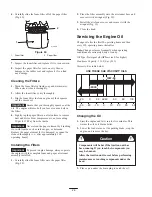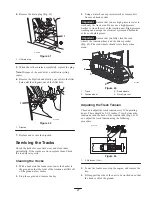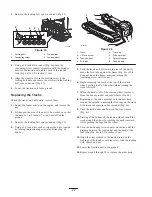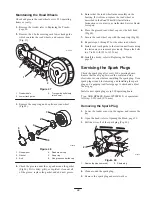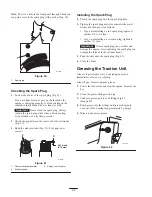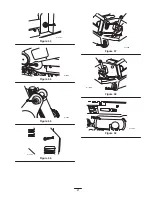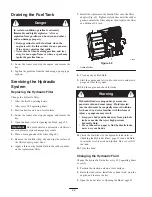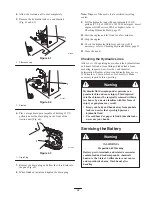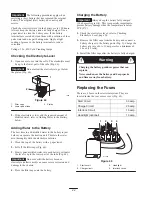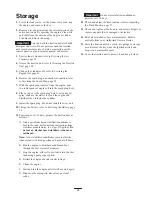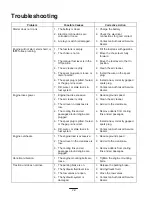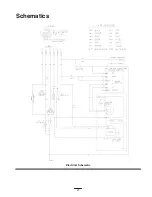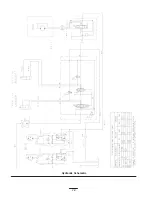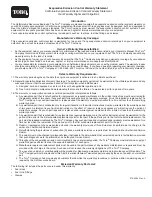
33
4.
Allow the traction unit to cool completely.
5.
Remove the hydraulic tank cap and dipstick
(Fig. 61 and 62).
1
m–7466
Figure 61
1. Filler neck cap
m–7467
1
Figure 62
1. Dipstick
6.
Place a large drain pain (capable of holding 15 US
gallons) under the drain plug on the front of the
traction unit (Fig. 63).
m–7462
1
Figure 63
1. Drain Plug
7.
Remove the drain plug and allow the oil to drain into
the pan (Fig. 63).
8.
When finished, install and tighten the drain plug.
Note:
Dispose of the used oil at a certified recycling
center.
9.
Fill the hydraulic tank with approximately 10 US
gallons (37.8 l) of 10W-30 or 14W-40 detergent, diesel
engine oil (API service CH-4 or higher); refer to
Checking Hydraulic Fluid, page 12.
10.
Start the engine and let it run for a few minutes.
11.
Stop the engine.
12.
Check the hydraulic fluid level and top it off if
necessary; refer to Checking Hydraulic Fluid, page 12.
13.
Close the hood.
Checking the Hydraulic Lines
After every 100 operating hours, check the hydraulic lines
and hoses for leaks, loose fittings, kinked lines, loose
mounting supports, wear, weather, and chemical
deterioration. Replace all moving hydraulic hoses every
1500 hours or 2 years, which ever comes first. Make
necessary repairs before operating.
Hydraulic fluid escaping under pressure can
penetrate skin and cause injury. Fluid injected
into the skin must be surgically removed within a
few hours by a doctor familiar with this form of
injury or gangrene may result.
•
Keep your body and hands away from pin hole
leaks or nozzles that eject high pressure
hydraulic fluid.
•
Use cardboard or paper to find hydraulic leaks,
never use your hands.
Warning
Servicing the Battery
CALIFORNIA
Proposition 65 Warning
Battery posts, terminals, and related accessories
contain lead and lead compounds, chemicals
known to the State of California to cause cancer
and reproductive harm.
Wash hands after
handling.
Warning








